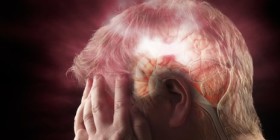Scientists will be ready to create babies from three people in around two years, if it is made legal, a review says.
The technique, using eggs from two women and one man’s sperm, would be used to prevent deadly mitochondrial diseases.
The UK fertility regulator said there was no evidence that it would be unsafe, but called for extra checks.
Changes to fertility regulations are being considered by government.
The illnesses are caused by damage to the tiny power stations in every cell of the body called mitochondria.
One in every 6,500 babies are born with severe mitochondrial disease which means they have insufficient energy to function – it leads to muscle weakness, blindness, heart failure and even death.
Mitochondria are passed only from mother to child.
A scientific panel, assembled by the Human Fertilisation and Embryology Authority (HFEA), assessed two advanced forms of IVF using material from three people – the parents to be and a woman with healthy mitochondria.


Prof Robin Lovell-Badge, from the Medical Research Council and a member of the scientific panel, said: “The direction of travel still suggests that it is all safe, but we don’t know what’s round the corner so we’re being a little cautious.”
The HFEA report called for a series of final tests before either of the procedures could be performed.
This would include a more detailed assessment of the efficiency of both proposed techniques when using human eggs or embryos.
The risk to the child and any subsequent generations of mutated mitochondria being transferred during the procedure also need to be investigated in more detail.
“I think that [two years] is not a bad estimation. The other sorts of experiments that we thought were necessary, again it will take about two years to complete all of those.”
Prof Andy Greenfield, who chaired the scientific review panel, said safety was “not a straightforward issue”.
He added: “Are these techniques safe in humans? We won’t know that until it’s actually done in humans.
“Until a healthy baby is born we cannot say 100% that these techniques are safe, if you think back to when IVF was a new technology all of these questions were asked before IVF.”

Mitochondria have their own tiny set of DNA, so any resulting children will have genetic material from three people.
The treatments would class as germ-line therapy, causing changes which would be passed down through the generations.
Ethical concerns have been raised and some campaign groups are worried it could be the thin end of the wedge to genetic modification of people.
‘As soon as we can’
The UK government has in principle backed three-person babies. The chief medical officer, Prof Dame Sally Davies, said last year: “It’s only right that we look to introduce this life-saving treatment as soon as we can.”
This scientific review was commissioned by government as part of a wider consultation. The Department of Health will publish its response to the consultation in the coming months and says a firmer timescale for any regulatory changes will be revealed then.
A spokesperson said: “Mitochondrial donation will give women who carry severe mitochondrial disease the opportunity to have children without passing on devastating genetic disorders.
“It will also keep the UK at the forefront of scientific development in this area.”
Sarah Norcross, the director of the Progress Educational Trust, said: “The scientific review committee have given a considered thumbs up to allowing techniques to avoid the transmission of inherited mitochondrial disease to be used in clinic.
“We therefore urge the Government to press ahead and pass regulations to allow families blighted by mitochondrial disease to benefit as soon as possible.”






Leave a reply